Custom eCommerce Development
This is a complete guide on custom eCommerce Development.
We'll cover:
- What are the benefits?
- How much does it cost?
- How long does it take?
- What are the pros and cons?
- And a lot more.
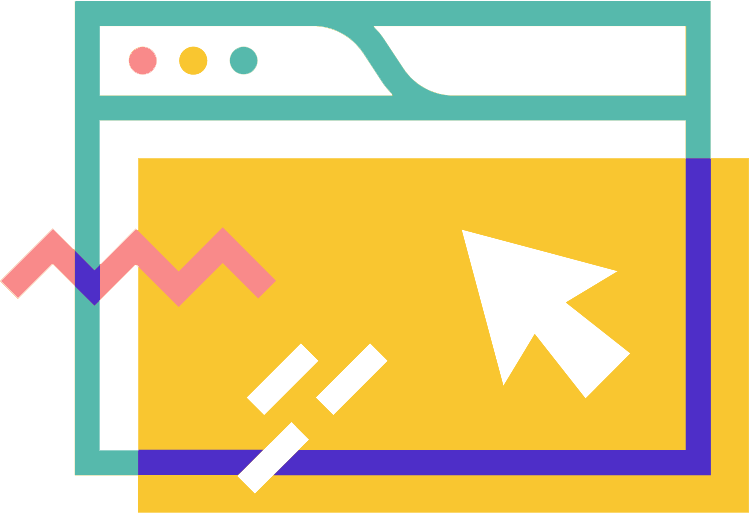
What is custom eCommerce development?
Custom eCommerce development is a process of building a unique, tailor-made eCommerce website to fit the specific needs of your business. The process involves planning, designing, and coding a complete eCommerce solution.
Why build a custom eCommerce website?
Building a custom eCommerce website provides a unique and engaging shopping experience for customers, meets the specific needs of your business, and can have a lower total cost of ownership in the long run.
There are no limits on what you can do if you go custom. Want to add VR and cryptocurrencies to your online store? No problem.
As you can see, this flexibility can give you a competitive edge.
And it can be worth it because the eCommerce industry is getting more and more competitive:
In 2021, retail eCommerce sales amounted to approximately 4.9 trillion U.S. dollars worldwide, according to Statista.
This figure is forecast to reach 7.4 trillion dollars by 2025.
Let's look at some of the key benefits of custom eCommerce websites:
Unique shopping experience
A custom eCommerce website is the best way to provide a unique and engaging shopping experience for your customers.
With a custom platform, you can control every aspect of the user experience, from the design and layout of your site to the functionality of your checkout process.
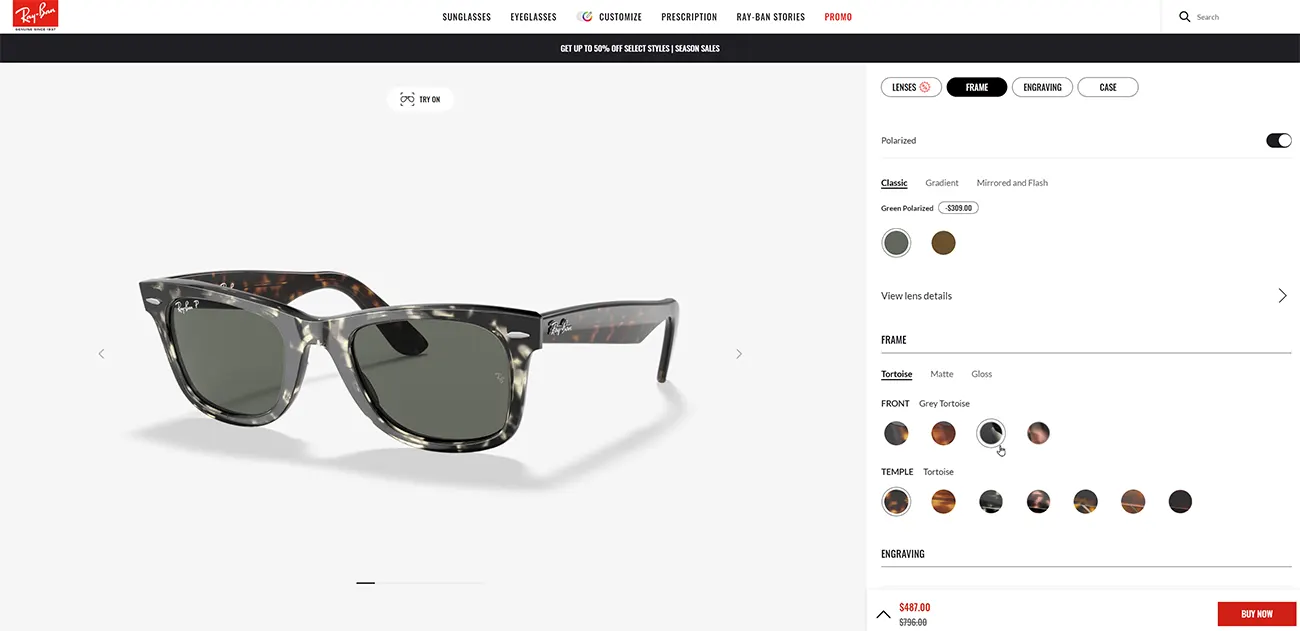
Complex business needs
If your business has specific needs that can't be met by an off-the-shelf solution, then a custom eCommerce platform is the way to go. For example, if you need to integrate with third-party systems or offer complex B2B features, then a custom platform will give you the flexibility to do so.
The low total cost of ownership
In the long run, a custom eCommerce platform could have a lower total cost of ownership than an off-the-shelf solution.
Keyword: could.
The pricing model of an off-the-shelf is based on your transaction volume. As your business grows, your costs will increase.
So it's all about identifying the break-even point.
For example, a business with annual sales between $20 and $500 million can expect to pay an annual licensing fee of between $200,000 and $700,000.
On the other hand, with a custom platform, you pay for the development once. From there on, you just pay for maintenance. So your costs will stay the same even as your business grows.
What are some popular features of custom eCommerce websites?
Here are some of the most popular website features that make businesses decide to go custom:
Omnichannel Commerce
Omnichannel commerce is providing a shopping experience that is easy to use, no matter what channel you are using. This includes shopping in stores, online, and on mobile devices.
Augmented Reality
Augmented Reality helps customers to make buying decisions from anywhere, anytime. For example, you can see how a chair would look in your living room or how a pair of glasses would look on your face.
Artificial Intelligence (AI) and Machine Learning (ML)
AI/ML is important for eCommerce businesses because it can help personalize recommendations, customer service, and search functionality. AI can help you understand how consumers shop online beyond just demographics and purchase history.
Personalization
Showing relevant products and content to customers is important for keeping them engaged with your site. Custom eCommerce development can help you personalize the shopping experience for each customer.

Checkout Process
The checkout process is one of the most important aspects of your eCommerce website. A custom platform gives you the flexibility to tailor the checkout process to your specific business needs, including using third-party payment processors and shipping providers.
Search engine optimization
Many online shops rely on organic traffic from search engines to generate sales. If you want to optimize your website for search engines, then a custom eCommerce platform is the way to go. With an off-the-shelf solution, you're limited to the features and functionality that the vendor provides. But with a custom platform, you can tailor your site specifically for SEO.
Multi-country and multi-language support
If you want to sell to customers in multiple countries or offer your site in multiple languages, then custom eCommerce development will give you the most flexibility. In particular, you'll need to consider things like taxes, shipping, and currency conversion.
Cost
Cost is the major factor in deciding to go custom.
A large upfront investment can save you millions in the long run.
Should you do it?
This chapter will go over all the costs you should anticipate if you go with custom development:
- Cost of building
- Maintenance costs
- Hosting costs
- Cost of integrations licenses
How much does it cost to build a custom eCommerce website?
Custom eCommerce website development costs can range from $50,000 to $500,000+, depending on the size and complexity of your project.
The table below shows examples of features and costs you can expect for three different eCommerce websites:
| Small | Medium | Large | |
|---|---|---|---|
| Product Catalog Size | 100-1,000 | 1,000-10,000 | 10,000+ |
| Traffic per day | 1,000 | 1,000-50,000 | 50,000+ |
| Custom Design | Off-the-shelf themes | unique functionality, | Custom templates |
| Integrations | 1-2 | 2-10 | 10+ integrations |
| Search Engine Optimization (SEO) | Title and Meta Tag optimizations | Title, Meta Tag, and limited Structured Data | Structured data, page speed optimizations, Core Web Vitals |
| Content Management System | No | No/Limited | Yes |
| Cost | $15,000 to $40,000 | $40,000 to $100,000 | $100,000+ |
Maintenance Costs
Software is unpredictable. Little things always come up.
You'll have to prepare a monthly budget to cover maintenance costs. It doesn't mean you'll use it every month.
The cost of maintenance is usually based on an hourly rate of a web developer, which is between $50 and $150.
So on a good month, expect to spend around $100-$500 on maintenance. For months when bugs come up, expect to spend between $1,500 and $2,500+.
Hosting Costs
For eCommerce websites, you need to choose a web host that can handle the traffic and transactions.
The two most popular types of web hosting are:
- On-premise hosting is when you host the website on your own servers. This requires more upfront investment, but you have more control over the security and performance of the website.
- Cloud hosting is when you host the website using cloud services such as Amazon AWS, Microsoft Azure, and Google Cloud. Cloud hosting is more scalable and flexible, but you have less control over the configuration of the servers.

Integration Costs
Integration costs cover software licensing that helps you run eCommerce operations. This can include things like CRM, payments process, shipping software, and ERP systems.
Most integrations have monthly or yearly subscription fees. For example, a basic search engine implementation can cost $50/month, while a complex tax system can cost $2,500+.
It adds up, so expect to pay at least a few hundred dollars per month for integrations.
eCommerce Website Development Process
Custom eCommerce website development is a journey.
It can take months and years to launch your website. But, as we've seen in the previous sections, it can all be worth it.
Let's see what it takes to create an eCommerce solution from scratch.
Who is involved?
To build a custom eCommerce website, you usually need:
- Business analyst,
- UX/UI Designer,
- Project Manager,
- Quality Assurance Engineer,
- Development team: eCommerce Web Developers (Back-end Developer, Front-end Developer)
The size of the team depends on the level of customization. For example, you might not need a UX/UI designer if you use off-the-shelf website themes.
Development process
The custom software development life cycle involves the following stages:
- Discovery: The first stage of the project. The development team gets to know your business goals, target audience, and existing processes. Based on your needs, they create a product roadmap and project timeline.
- Prototyping: Helps you visualize the future product and get feedback from stakeholders in the early stages.
- Design phase: The UX/UI designer creates mockups of the eCommerce websites. It's intertwined with the prototyping phase.
- Development: The development team writes code, connects integrations, and creates database structures.
- Quality Assurance: Testers make sure the site is working as expected.
- User acceptance testing: The final confirmation from stakeholders the website meets all the requirements.
- Launch: Your online store is ready for customers.
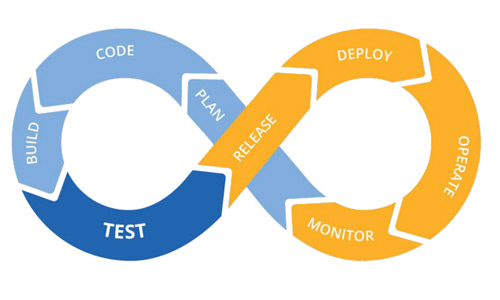
How long does it take?
A basic custom eCommerce website will take 6 months at a minimum from start to finish.
Here's an example project timeline from an eCommerce solution I've worked on:
| Phase | Duration in Weeks |
|---|---|
| Discovery | 3 |
| Design and Prototyping | 6 |
| Development | 12 |
| Testing | 3 |
| User Acceptance Testing | 1 |
| Modifications based on testing | 2 |
| Final preparations and launch | 1 |
| Total: | 28 weeks = ~6.5 months |
More complex eCommerce solutions usually take a year or more from start to finish.
I can tell you from my years of experience building eCommerce solutions: timelines always change.
Software development is unpredictable. There are always unknown unknowns that come up. So, prepare to adjust the timeline as you go.
Custom eCommerce Development: Pros and Cons
Pros:
- Ownership
- Flexibility
- Scalability
- Longevity & Brand protection
- No license fees
Cons:
- Upfront cost
- Maintenance
- Effort
- Time to market
Pros
Flexibility
Flexibility is the biggest advantage of building a custom eCommerce site over going with an existing platform.
Essentially, you can build whatever you imagine.
Here are some examples where flexibility is crucial:
- Complex multi-channel commerce: If you have complex selling channels with B2C and B2B rules.
- Highly regulated industry: You must abide by laws.
- Freedom to choose: You can integrate with any software you want, not just software offered by a vendor.
No license fees
Most of the eCommerce platforms have a monthly license fee plus a percentage on each sale.
For example, if you do more than $800,000 per month with Shopify Plus, they will charge you $2,000 fixed plus an additional 0.25% of online store sales per month.
Remember, pricing could always change.
Longevity & Brand protection
What if Shopify goes out of business?
With a custom solution, you don't have to worry about such things. You own your website and, as long as it's maintained, it should run fine for many decades.
The stability of ownership increases the value of your business and allows you to protect your brand.
Cons
Upfront cost and effort
Building a custom eCommerce store has a lot larger upfront cost. On the other hand, SaaS eCommerce platforms, such as BigCommerce, have zero upfront costs.
On top of that, developing a custom eCommerce solution takes months of focus that could be spent elsewhere.
Time to market
eCommerce platforms have a lot faster time to market compared to custom eCommerce solutions.
For example, BigCommerce claims 90% of BigCommerce Enterprise clients launch in under 90 days.
Maintenance
As we discussed in the Costs section, maintenance costs can range from a couple of hundred dollars to thousands of dollars a month.
Plus, your team needs to take care of logs, hosting, certificates, and other operational tasks.
Integrations & Technologies
Choosing the right technology can save you a lot of money.
Likewise, integrations give you the best of both worlds - you don't have to build complete functionality from scratch, but you also don't have to completely depend on a 3rd-party vendor.

Integrations
Even when you decide to build a custom eCommerce solution, it doesn't mean you have to build everything from scratch.
You can still take advantage of existing solutions and platforms, such as eCommerce CMS, CRM, and ERP systems.
With a help of an integrations specialist, you pick which integration makes the most sense for your online business.
Some of the most popular integrations for eCommerce businesses are:
- Payment processors (e.g., PayPal, Stripe)
- Shipping providers (e.g., UPS, FedEx)
- Accounting software (e.g., QuickBooks, Xero)
- Analytics platforms (e.g., Google Analytics, Adobe Analytics)
- Live chat and customer support software (e.g., Zendesk, LiveChat)
- Conversion rate optimization software (e.g., Optimizely, VWO)
- Email marketing platforms (e.g., MailChimp, Constant Contact)
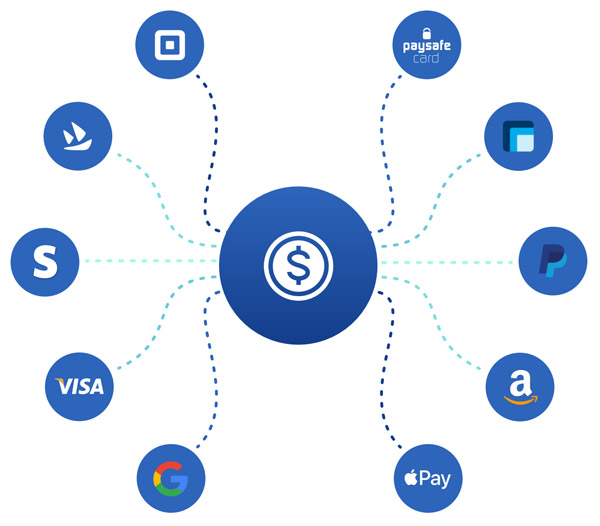
Technologies for Custom eCommerce Development
Even if you are not technical, it's good to understand the eCommerce technology involved in custom eCommerce development. This will help you understand how much your project will cost and how easy it will be to maintain your site in the future.
You don't want to build your site on a technology that is going to become obsolete in a few years.
A custom website involves a backend, frontend, and database.
Backend
The backend is the brain behind the website. It's responsible for all the logic and processes that happen behind the scenes.
The most common backend languages are:
- PHP,
- Java,
- Python,
- Ruby,
- C# (.NET)
Frontend
The frontend is what the users see and interact with. It's responsible for the design and user experience of the website.
The most common frontend technologies are:
- HTML,
- CSS,
- JavaScript (React, Vue, Angular)
Database
A database stores all your data. This can be anything from product information to customer data.
The most common database technologies are:
- MySQL,
- Microsoft SQL
- MongoDB,
- PostgreSQL,
- Oracle Database
Custom eCommerce Examples
Walmart
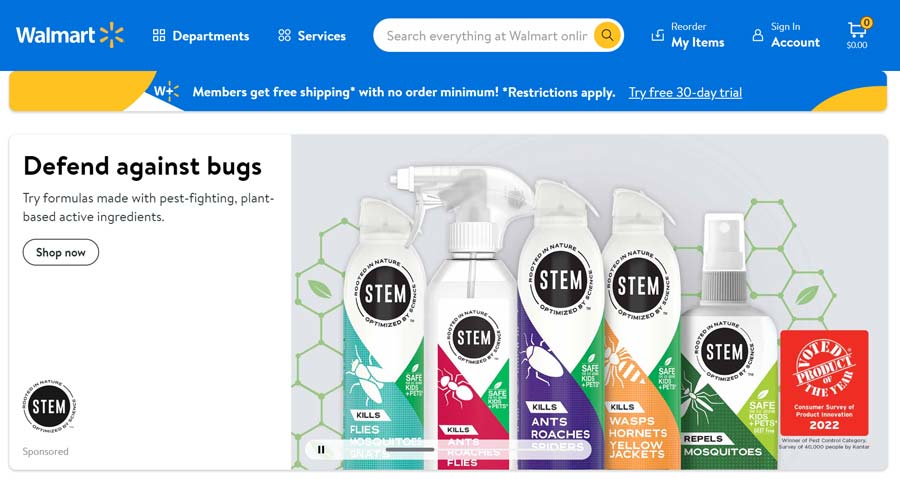
Walmart uses a custom eCommerce platform that was built specifically for their needs. Their website uses React.JS and Node.JS to bring them a competitive edge.
Costco
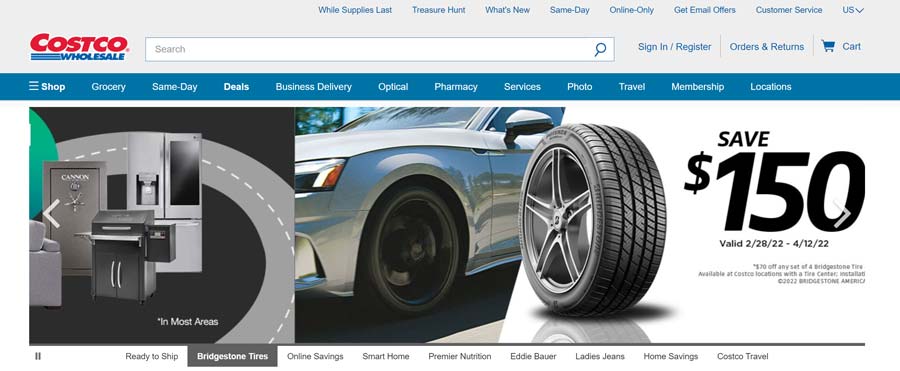
Costco uses Microsoft technologies (C#, .NET) for the backend.
Custom eCommerce Development Services
A custom eCommerce web development company can help you build a tailor-made platform that meets all your unique business needs.
When building a custom eCommerce platform, look for an agency that:
- Has a strong team of eCommerce experts
- Has an in-house team for custom eCommerce software development
- Has experience building custom eCommerce platforms
- Offers a comprehensive suite of eCommerce services, from strategy and design to development and ongoing maintenance
- Can provide a detailed proposal with a cost estimate
Josip Miskovic is a software developer at Americaneagle.com. Josip has 10+ years in experience in developing web applications, mobile apps, and games.
Read more posts →Last modified on: